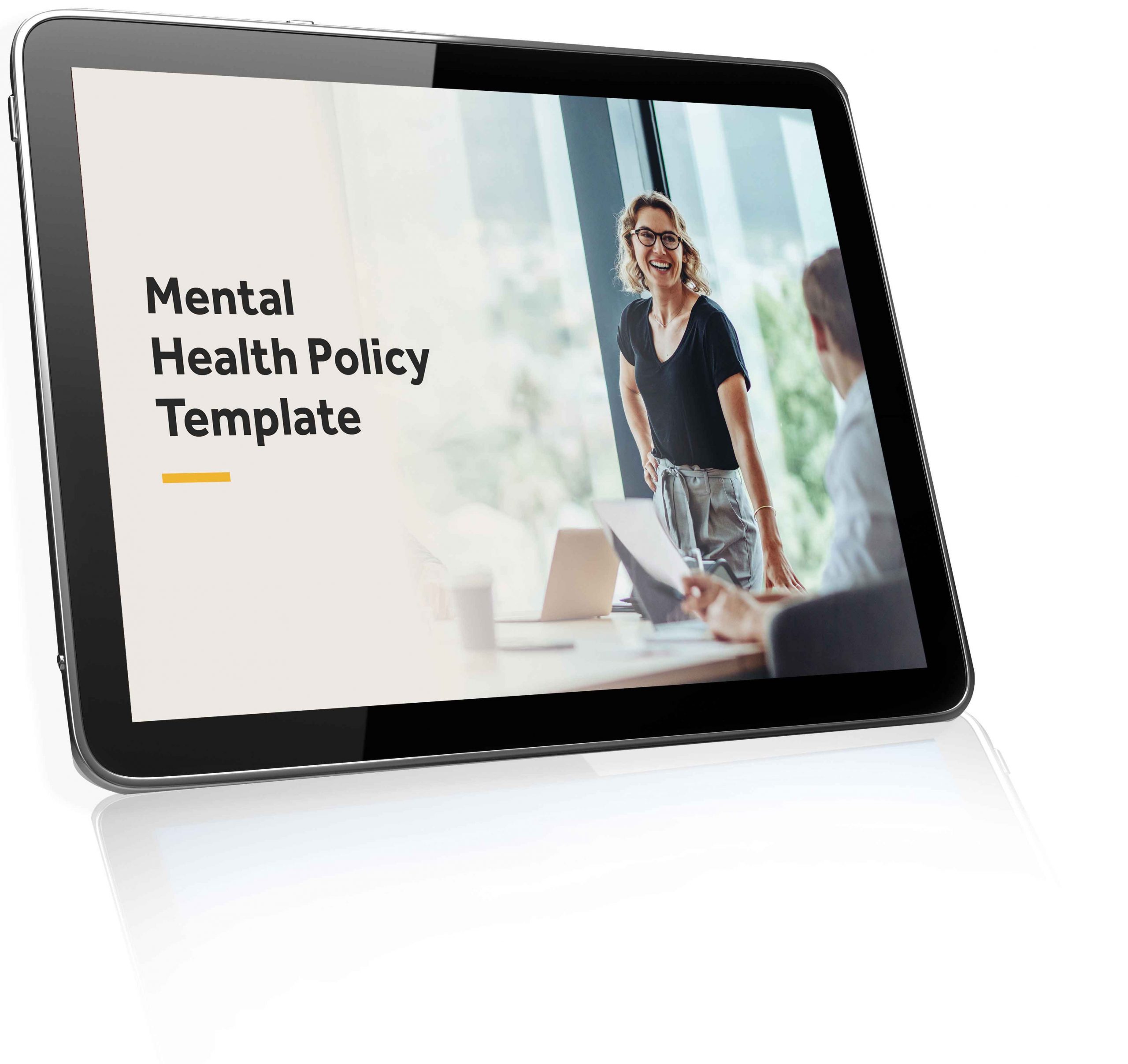
What is employee burnout?
The World Health Organization describes employee burnout as a syndrome resulting from chronic workplace stress. The concept of employee burnout applies specifically to an occupational context and should not be used to describe experiences in other areas of life.
In simple terms, employee burnout is a combination of job-related stress, physical and mental exhaustion, and cynical feelings about work.
Employee burnout is a growing phenomenon, with tech and software leading to the erosion of work and personal life boundaries. In the digital age, employees often find themselves ‘always on’, constantly responding to emails or phone calls and dealing with a heavy workload 24/7.
What are the signs of employee burnout?
We all have days when we feel tired and overloaded – when getting out of bed requires superhuman levels of strength. However, if an employee regularly experiences this, they may be burned out.
Employee burnout is a gradual process that tends to creep up on people. It’s easy to ignore the signs of burnout at first, but the longer they are left unresolved, the more serious the repercussions can be for an employee’s physical and mental health.
Humans are built to handle healthy amounts of stress and pressure. However, when the pressure gets extreme or our work environment becomes unhealthy, people begin to inch towards burnout. In order to prevent employee burnout, it’s vital that employers watch out for the early signs:
Mentally distant: A state of emotional exhaustion means a burnt-out employee is likely to be unusually distant and disconnected from their work. Employee burnout is directly linked to job satisfaction and employee retention, with a survey conducted by Gallup reporting that a burned-out employee is more than twice as likely to be actively seeking a new job.
Exhaustion: An employee suffering from burnout will normally experience heightened levels of anxiety, which can negatively impact their usual sleep patterns. In this way, workplace burnout can lead to exhaustion and a vicious cycle that’s hard to break.
Increased absenteeism: Unsurprisingly, employee burnout frequently leads to diminished physical and mental health. Subsequently, burned-out employees are 63% more likely to take sick leave.
Decreased productivity: One of the most noticeable symptoms of employee burnout is poor performance. Employees suffering burnout will struggle to maintain their normal levels of productivity, which can lead to missed targets and unmet deadlines. Additionally, they will lack the energy and drive to learn new skills and make progress in their role.
Negative attitude: Mental health issues are another tell tail sign of burnout. An employee who is normally upbeat and contributes to a positive work environment may disengage from workplace activities and struggle to interact socially interact.
Burnout vs depression
There is a longstanding debate about the similarities between burnout and depression. Is burnout the same thing as depression? Some studies have suggested the two concepts are distinct. While burnout is job-related and specific to a particular situation, depression is general and can occur in a variety of contexts.
However, common signs of burnout include fatigue, exhaustion, and a lack of interest in activities and people. These are also some of the most common symptoms of depression. Added to these similarities, an increase in burnout invariably leads to an increase in depression, while a depressed employee is more likely to suffer burnout.
Although burnout and depression are different, it’s clear that the two conditions are closely related.
What causes workplace burnout?
Discussing the causes of workplace burnout, professor of psychology at the University of California, Berkeley, Christina Maslach says we are approaching the issue from the wrong angle. Because burnout is a problem that effects individual employees, we often assume there is something wrong with the person. In reality, the root of problem normally lies with the company and an unhealthy workplace culture.
Employee burnout tends to be the result of poor organisational structure and an unhealthy workplace culture. This can take the form of:
Unmanageable workloads: The number of hours you work each week really does matter. People who work 60 hours or more are at higher risk of burnout. Long hours, excessive tasks, lack of clarity, or short deadlines can all add up to an unmanageable workload.
Toxic workplace culture: A workplace culture is defined by how employees go about their work and how they engage with other team members. A toxic workplace culture could mean any of the following:
Lack of flexibility: Strict rules about logging in and the timing of lunch breaks, or a lack of flexible working arrangements can lead to a lack of compromise about how employees complete their work. The more restrictive your policies are, the harder employees will find it to maintain a healthy work routine.
Intense pressure: A common reason for employee burnout is excessive demands placed on staff by managers and other business leaders. Unreasonable deadlines and unmeetable targets can make employees feel unappreciated and overworked.
A culture of overworking: Businesses often glorify employees who are ‘the first in and last to leave’. However, employees who overwork are most susceptible to burnout. An unhealthy culture of overworking may include coworkers looking down on an employee who takes a holiday and enjoys a hard-earned break.
Lack of support: If employee burnout is a persistent issue in your business, it might be a sign that there is a systemic problem. Every business needs to have policies and processes in place that are specifically designed to support employees suffering from stress and burnout.
Unfair treatment: Unfair treatment can manifest in ways such as favouritism, discrimination, consciously offering someone better and bigger projects, or ignoring the ideas of a particular person. This kind of unfair treatment causes a break in trust, damages self-esteem and can be the catalyst for employee burnout.

Are you protecting your staff’s mental health?
Employers have an obligation to provide a mentally healthy workplace for all their staff.
A comprehensive and responsive Mental Health Policy can help you identify and reduce mental health risks and protect your staff. Unsure how to create one? Download our FREE Mental Health Policy Template now.
How to prevent employee burnout
In an attempt to reduce burnout, many companies offer time off or other benefits to promote health and wellbeing. The message behind offering these kinds of perks is that employees need to be doing more to preserve their own health (more exercise. more mindfulness, more relaxation etc.). It also indicates that an employee’s failure to care for themselves is the sole cause of their burnout.
If you are telling your employees the best thing that they can do to prevent burnout is to not come to work, there must be something fundamentally wrong with the work. Employees who return from leave come back to the exact same situation and find themselves trapped in a cycle of overwork and stress again.
The best way to reduce employee burnout is to implement a holistic strategy:
Integrate wellbeing into your culture: When your organisation integrates staff wellbeing into the culture (instead of adding it as an afterthought), employees have the best possible chance to avoid burnout. Encourage staff to take regular breaks and set clear expectations about work-life balance. You should also actively discourage your employees from overworking.
Equip and educate your managers: Managers set the tone for the workplace and should lead the way when it comes to supporting employees. Are your leaders equipped to listen and provide emotional support? Sometimes this can be as simple as walking around the workplace. Management by wandering around (MBWA) allows managers to observe employees in their space and see the real issues that are affecting them daily. This approach can also help employees to feel more connected with their managers.
Improve the employee experience: The employee experience begins from the moment you put out a job advertisement. Optimising your employees’ end-to-end experience can help your company overcome employee burnout:
Create an accurate job ad: Is the job description accurate? Have you included all the relevant information about a potential employee’s work? Allowing employees to understand the nature of the work and workload is a vital first step for preventing burnout.
Build an onboarding experience: A good onboarding experience can increase employee engagement and help staff perform their role efficiently. A new staff member who isn’t properly onboarded, inducted and trained is far more likely to slip into burnout.
Communicate: Make sure communication lines between you and employees are open and simple. If they have to chase their managers for guidance or advice, it can make employees feel unappreciated. It also makes it harder for staff members to open up about being overwhelmed by their workload.
Offer constructive feedback: Employees will make mistakes and how you respond to these mistakes is vital. Offer practical and constructive feedback. What can they do better? Is there a tool or resource they can use? How can you help them? Underperforming staff who don’t receive constructive feedback are more likely to push themselves to a point of burnout.
Flexibility: Employees want employers who trust them. Giving them the autonomy of remote or hybrid work can create the flexibility they need to strike a healthy work-life balance.
Implement a stress management strategy: This policy should give employees ways to discuss their issues or grievances in private without fear of judgement or retribution from colleagues. The policy should also lay out a practical course of action to manage work-related stress and assist with employee recovery.
Offer stress leave: Stress leave is often given to employees who need time-off to recover from exhaustion and work-related pressures. In New Zealand, there is no legal obligation for employers to offer staff stress leave. However, offering stress leave can create a safety net for burned-out employees, giving them a chance to rest and recover.
How to promote physical and mental health
Simple though it may sound, one of the most effective ways to reduce employee burnout is to promote the opposite: health and wellbeing.
Allow for recovery: If you want your employees to work at the highest levels, it’s crucial that you allow them to spend enough time not working. Make sure you meet minimum annual leave requirements, encourage your staff to take time off, and always do your level best to approve any reasonable leave requests.
Create social connections: Professional relationships can be rewarding but they can also be emotionally and mentally exhausting. Try to create social connections in your workplace that don’t revolve around work. You can hold regular tea breaks where employees get to move around and talk about something other than work. If you use Teams, Slack, or another chat platform, encourage staff to set up channels where they can chat about hobbies, passions, or anything else unrelated to work.
Encourage a healthy lifestyle: You might hold regular yoga workshops or meditation sessions, giving employees the chance to disconnect from their roles and relax. Company sports teams are also popular amongst staff, giving everybody the chance to build their fitness, release a bit of stress, and have fun with their teammates.
Offer an employee assistance program (EAP): This is a confidential counselling service offered by employers to their employees. EAPs are designed to support the social and psychological wellbeing of staff, both in the workplace and in their personal lives. Many large businesses will set up internal EAPs, although employee counseling is available through your local government’s mental healthcare scheme. This means your EAP may be as simple as connecting staff who are experiencing mental and emotional difficulties, including burnout, with an appropriate government service.
According to New Zealand legislation, employers have a health and safety obligation to provide a safe work environment for all employees. This includes monitoring, identifying and managing workplace stress.
To get all your workplace health & safety and employment relations questions answered, contact Employsure’s FREE Advice Line on 0800568012.


